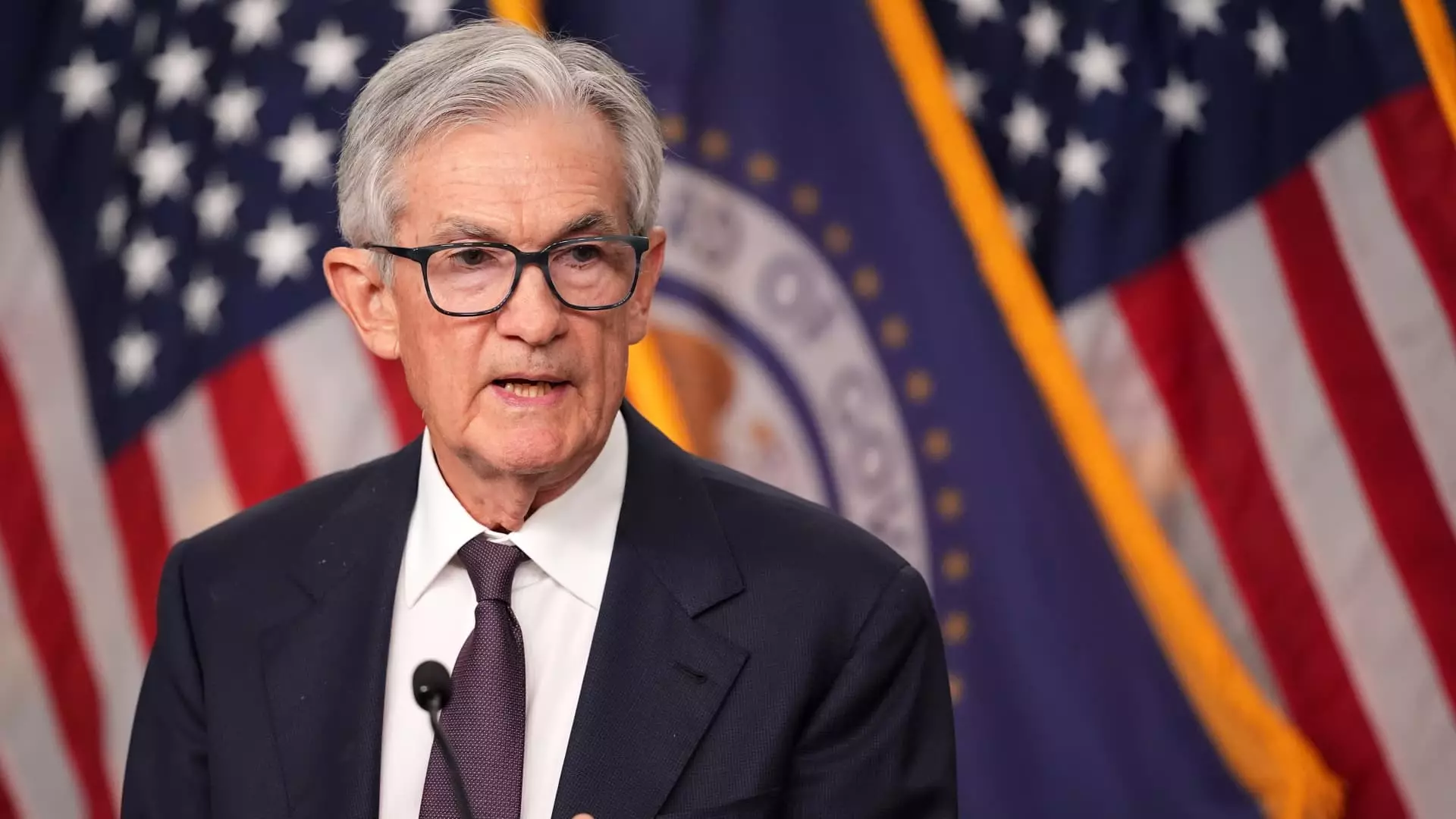In the recently released minutes from the Federal Open Market Committee (FOMC) meeting, the backdrop of tariff-induced inflation paints a troubling picture for American economic policy. The intertwining of trade disputes and inflationary pressure has become a labyrinthine challenge for Federal Reserve officials. The concern is palpable: tariffs could catalyze an inflation spike and leave policymakers grappling with an intricate web of interest rate decisions. This complexity is reminiscent of a house of cards – one wrong move and the entire structure could come tumbling down.
In a climate of rising prices and fluctuating trade agreements, the Fed has opted not to tinker with interest rates, maintaining them between 4.25% and 4.5%. This level, described as “moderately restrictive,” appears to cushion against inflation while allowing the economy to breathe steadily. Yet, the reluctance to adjust rates reflects a cautious acknowledgment; uncertainty is rampant, and the nuances of current fiscal policies leave many scratching their heads. This reticence marks a stark contrast to the assertive monetary policy needed to navigate today’s convoluted landscape of economic challenges.
The Sizeable Elephant in the Room: Employment and Growth
Despite the worries tied to inflation and trade dynamics, there remains a silver lining – solid economic growth and a labor market that, while “broadly in balance,” is teetering on the brink of potential weakness. However, the Fed’s acknowledgment of increasing risks to employment hints at a simmering caution that looms over overall consumer confidence and spending patterns. The gibberish of economic data presents a convoluted tale; the narrative suggests resilience but underneath lurks a sense of trepidation cultivated by unpredictable trade policies and tariff arrangements.
Perhaps it is human nature to lean towards optimism in the face of adversity, yet to harbor such optimism without acknowledging the potential pitfalls could lead stakeholders down a precarious path. The dual objectives of full employment and low inflation have become shackled by policy uncertainties— an unfortunate fate that compromises proactive governance. It raises a fundamentally critical question: can the economy sustain its growth while riding the tide of erratic tariff negotiations and foreign relations?
Monetary Policy under Fire
Looking further, the discourse around specific Fed policies raises eyebrows. The central bank’s previous strategy of “flexible average inflation targeting,” aimed at fostering an inclusive job market by allowing inflation to surpass the 2% threshold temporarily, is now fraught with complications. When inflationary risks loom large, as they do now, this approach can feel less like a safeguard and more like a time bomb waiting to detonate. Herein lies the paradox—the Fed’s commitment to its 2% inflation target becomes a double-edged sword when market shocks threaten to uproot tried-and-true fiscal strategies.
Complicating matters further, the Fed’s independence is increasingly under siege. As President Trump openly pressures the Fed to lower interest rates, the integrity and autonomy of monetary policy are put to the test. Can the Federal Reserve, an institution built on the principles of objectivity and economic rationality, resist the politicization of its sacred goal to maintain stability? If history teaches us anything, it is to be wary of the dangers posed when political machinations seep into economic decision-making.
The Road Ahead: An Uncertain Horizon
Recent market reactions to the Fed’s inaction reflect the profound apprehension surrounding the future. As traders begin to lose faith in short-term cuts, the anticipation flutters ominously, creating an environment rife with speculation. Although the agreement to ease tariffs between the U.S. and China brought initial bliss to Wall Street, it’s clear that the road to recovery is paved with uncertainty. Is it viable for policymakers to cling to cautious optimism in light of realities that challenge fundamental economic principles?
Moving forward, the Federal Reserve faces the daunting task of devising a robust policy framework that can weather diverse economic environments. As they strive to uphold their inflation targets while balancing growth and employment dynamics, one must wonder: how long can this precarious equilibrium hold? If past experiences guide us, complacency will likely be the gravest mistake. The specter of economic imbalance looms, waiting for a miscalculation to plunge the markets into chaos.


Leave a Reply